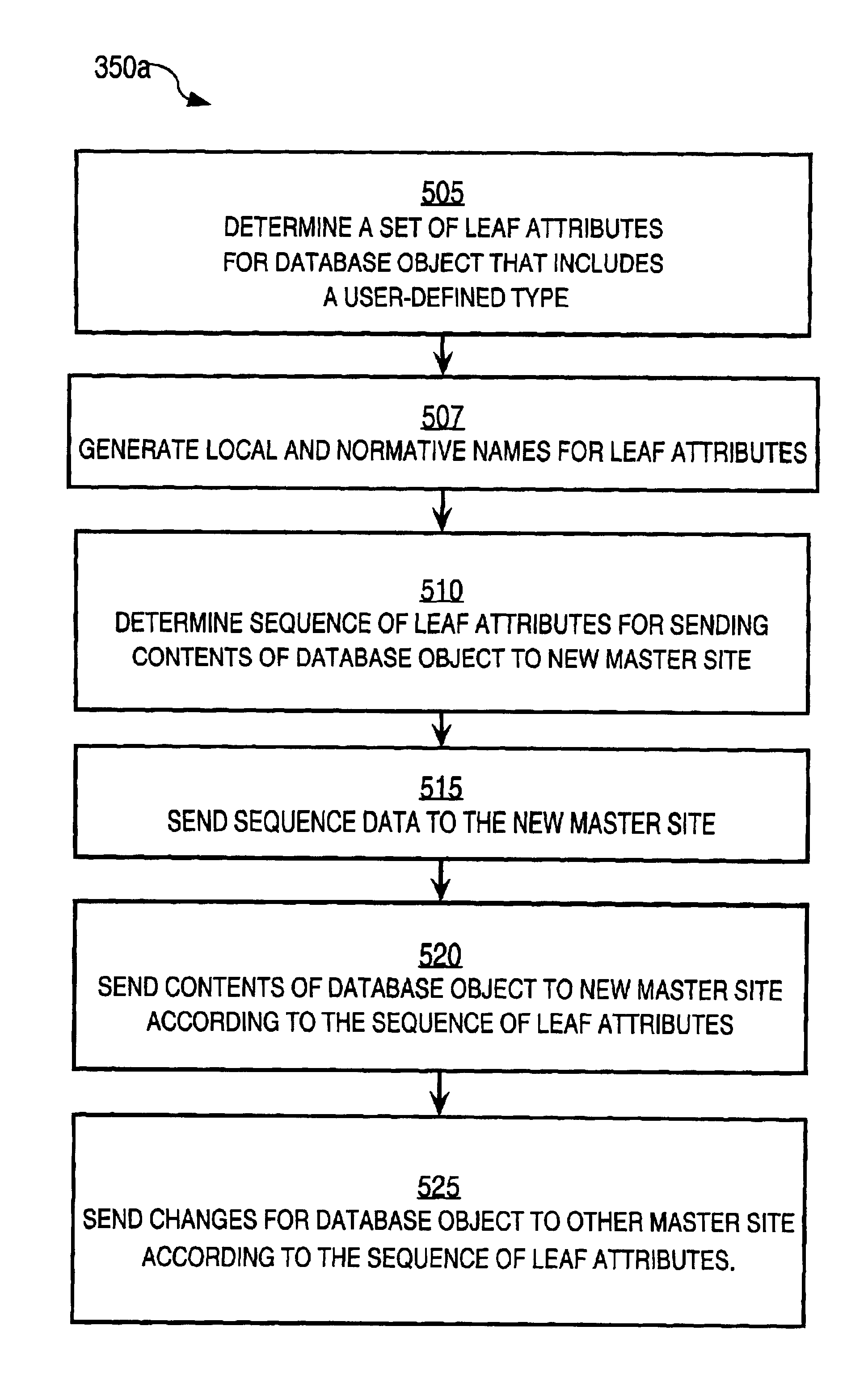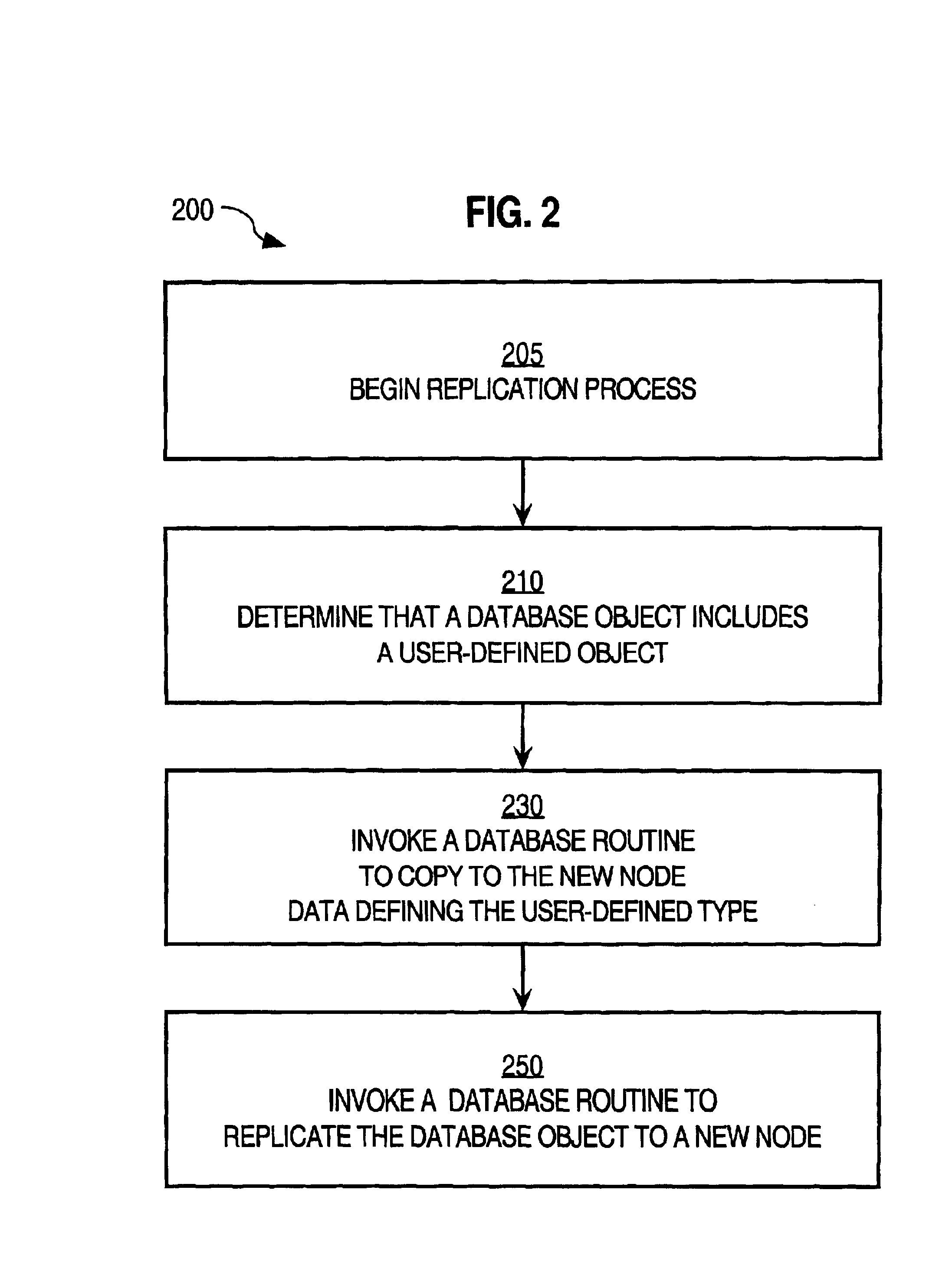Techniques for peer-to-peer replication of objects in a relational database
a technology of relational database and object replication, applied in the field of database object replication, can solve the problems of conventional procedures invoked for replicating database objects onto the new node that do not allow user-defined types within a database object, conventional routines are unable to proceed, and the database server on the new master site is unable to interpret the name of the user-defined type included in the data received
- Summary
- Abstract
- Description
- Claims
- Application Information
AI Technical Summary
Benefits of technology
Problems solved by technology
Method used
Image
Examples
Embodiment Construction
[0037]Techniques for replication of database objects in an object-relational database are described. In the following description, for the purposes of explanation, numerous specific details are set forth in order to provide a thorough understanding of the present invention. It will be apparent, however, to one skilled in the art that the present invention may be practiced without these specific details. In other instances, well-known structures and devices are shown in block diagram form in order to avoid unnecessarily obscuring the present invention.
Structural Components
[0038]FIG. 1 is a block diagram that illustrates a distributed database in which a database object 112 is replicated to a new node 160, according to one embodiment.
[0039]A first master site 140 connected to network 170 includes a database server 104a and a persistent storage device 146. The database server 104a is configured to support object-relational databases. To support object-relational databases, the database...
PUM
 Login to View More
Login to View More Abstract
Description
Claims
Application Information
 Login to View More
Login to View More - R&D
- Intellectual Property
- Life Sciences
- Materials
- Tech Scout
- Unparalleled Data Quality
- Higher Quality Content
- 60% Fewer Hallucinations
Browse by: Latest US Patents, China's latest patents, Technical Efficacy Thesaurus, Application Domain, Technology Topic, Popular Technical Reports.
© 2025 PatSnap. All rights reserved.Legal|Privacy policy|Modern Slavery Act Transparency Statement|Sitemap|About US| Contact US: help@patsnap.com



